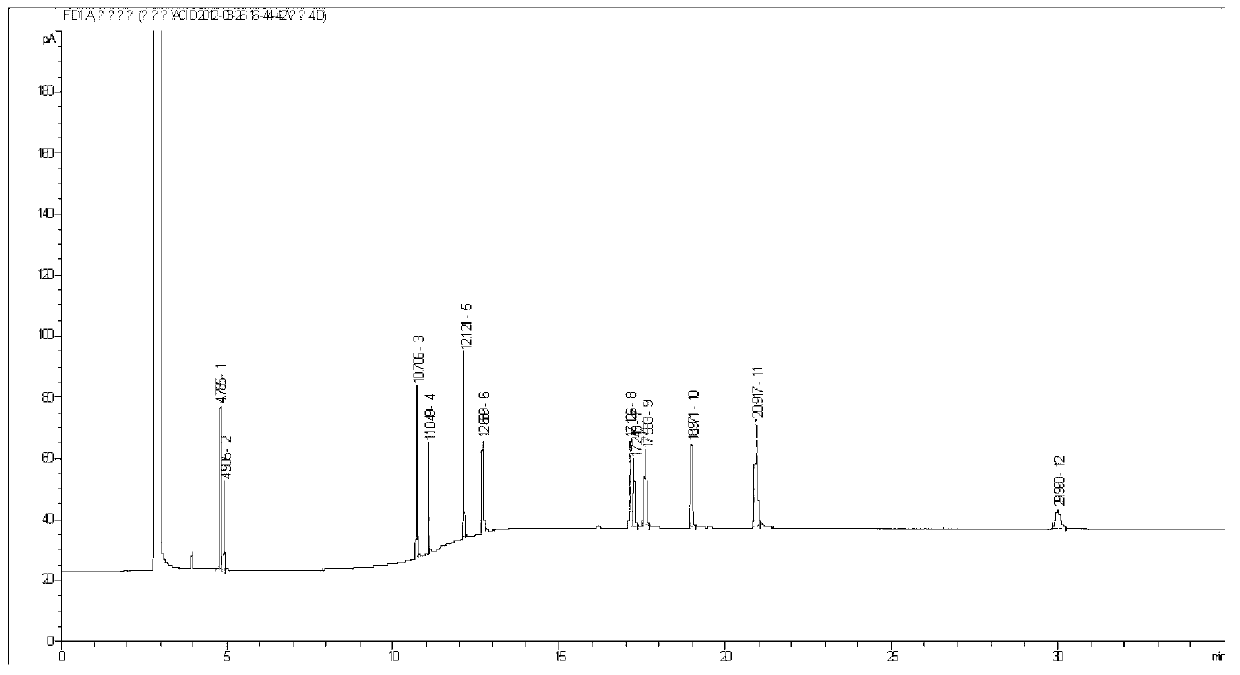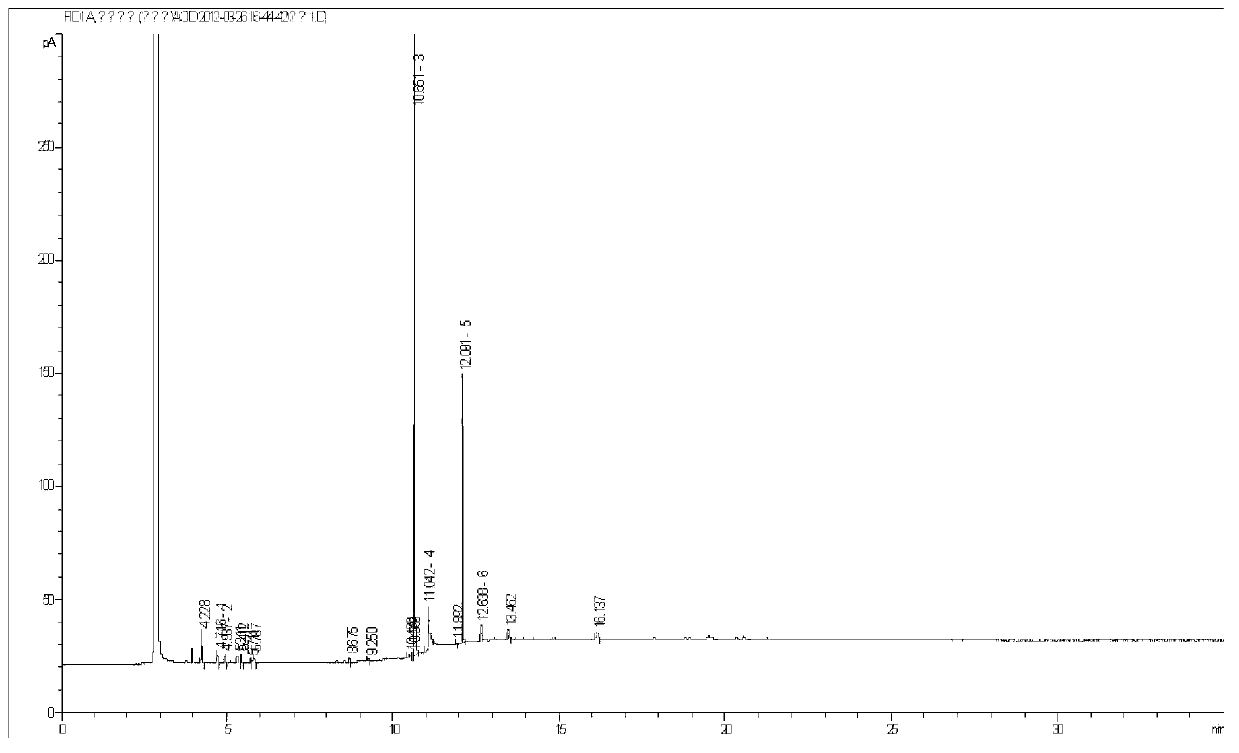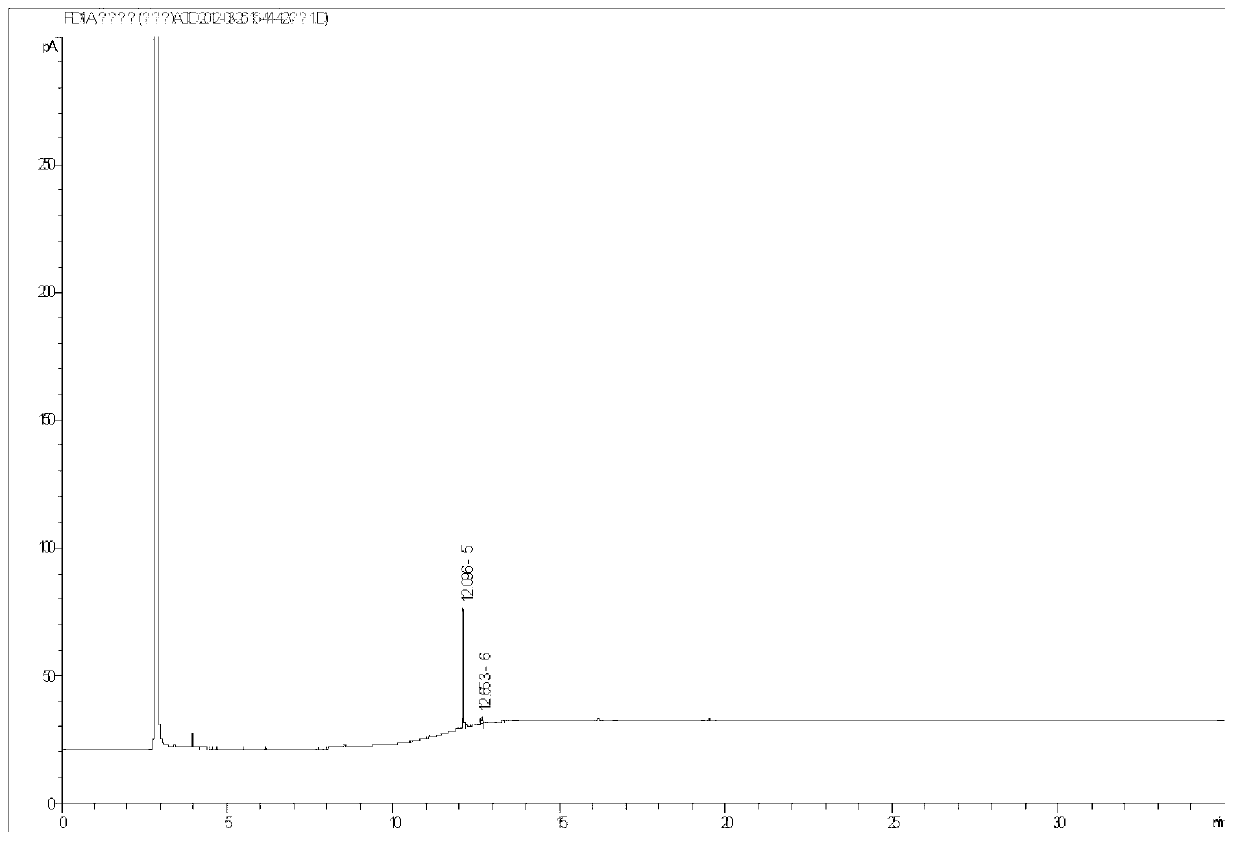Gas chromatography detection method of corrosion removers in food
A technology of gas chromatography and detection method, which is applied in the detection field of gas chromatography for determination of various preservatives in food, can solve the problems of high requirements for gas chromatography-mass spectrometry instruments, unsuitable promotion and use, and influence on accurate quantification, etc., and achieves detection sensitivity. High, linear, and easy-to-use results
- Summary
- Abstract
- Description
- Claims
- Application Information
AI Technical Summary
Problems solved by technology
Method used
Image
Examples
Embodiment 1
[0070] Determination of preservatives in soy sauce
[0071] Weigh 5.00g of soy sauce (accurate to 0.01g) into a 125mL separatory funnel, add 10mL of saturated NaCl aqueous solution and 1.0mL of hydrochloric acid solution and mix well, then add 1.0mL of undecanoic acid internal standard solution, and then use 50mL, 30mL, 30mL of Extract three times with diethyl ether, combine the ether layers, wash with 30mL saturated NaCl aqueous solution until neutral, dehydrate through anhydrous sodium sulfate, concentrate in a water bath at 40±2°C to 0.3-0.5mL, blow dry with nitrogen, and dilute to 5.0 mL with acetone mL. After the sample liquid passes through a 0.45 μm filter membrane, it enters the gas chromatograph for determination, and the spectrum is shown in figure 2 , the soy sauce contains propionic acid 0.034g / kg, dimethyl fumarate 0.010g / kg, dehydroacetic acid 0.082g / kg, sorbic acid 0.67g / kg, benzoic acid 0.40g / kg.
Embodiment 2
[0073] Determination of preservatives in orange juice beverages
[0074] Weigh 10.00g of orange juice drink (accurate to 0.01g) into a 125mL separatory funnel, add 10mL saturated NaCl aqueous solution and 1.0mL hydrochloric acid solution and mix well, then add 1.0mL undecanoic acid internal standard solution, and then use 50mL, 30mL, Extract three times with 30 mL of diethyl ether, combine the ether layers, wash with 30 mL of saturated NaCl aqueous solution to neutrality, dehydrate through anhydrous sodium sulfate, concentrate in a water bath at 40±2°C to 0.3-0.5 mL, blow dry with nitrogen, and dilute to 0.3-0.5 mL with acetone. 5.0mL. After the sample liquid passes through a 0.45 μm filter membrane, it enters the gas chromatograph for determination, and the spectrum is shown in image 3 , the beverage contained 0.10g / kg of benzoic acid.
Embodiment 3
[0076] Determination of preservatives in vinegar
[0077] Weigh 7.00g vinegar (accurate to 0.01g) into a 125mL separatory funnel, add 10mL saturated NaCl aqueous solution and 1.0mL hydrochloric acid solution and mix well, then add 1.0mL undecanoic acid internal standard solution, and then use 50mL, 30mL, 30mL Extract three times with diethyl ether, combine the ether layers, wash with 30mL saturated NaCl aqueous solution until neutral, dehydrate through anhydrous sodium sulfate, concentrate in a water bath at 40±2°C to 0.3-0.5mL, blow dry with nitrogen, and dilute to 5.0 mL with acetone mL. After the sample liquid passes through a 0.45 μm filter membrane, it enters the gas chromatograph for determination, and the spectrum is shown in Figure 4 , record and contain propionic acid 0.42g / kg, dimethyl fumarate 0.075g / kg in this vinegar.
PUM
 Login to View More
Login to View More Abstract
Description
Claims
Application Information
 Login to View More
Login to View More - R&D
- Intellectual Property
- Life Sciences
- Materials
- Tech Scout
- Unparalleled Data Quality
- Higher Quality Content
- 60% Fewer Hallucinations
Browse by: Latest US Patents, China's latest patents, Technical Efficacy Thesaurus, Application Domain, Technology Topic, Popular Technical Reports.
© 2025 PatSnap. All rights reserved.Legal|Privacy policy|Modern Slavery Act Transparency Statement|Sitemap|About US| Contact US: help@patsnap.com



